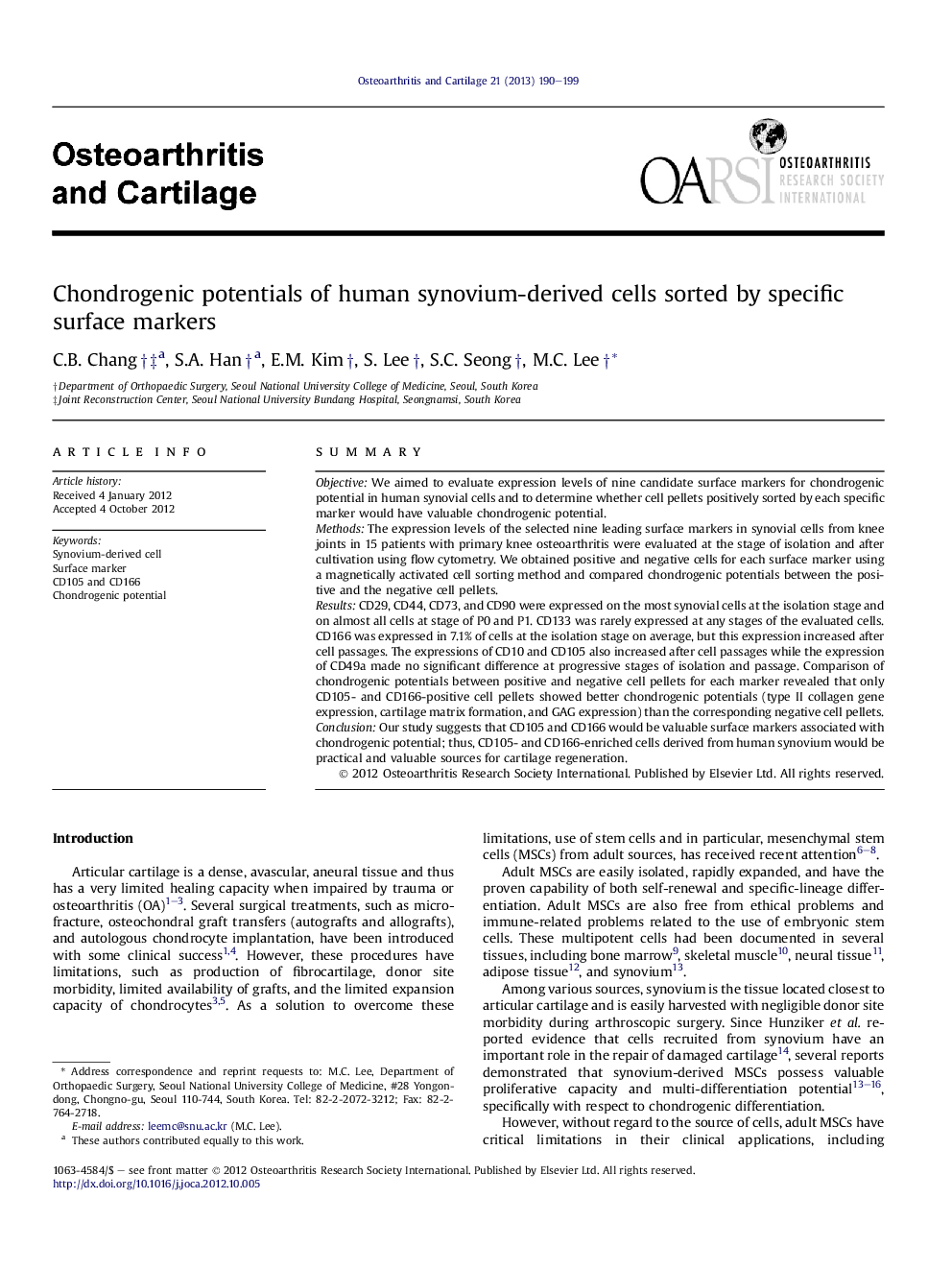| Article ID | Journal | Published Year | Pages | File Type |
|---|---|---|---|---|
| 3379632 | Osteoarthritis and Cartilage | 2013 | 10 Pages |
SummaryObjectiveWe aimed to evaluate expression levels of nine candidate surface markers for chondrogenic potential in human synovial cells and to determine whether cell pellets positively sorted by each specific marker would have valuable chondrogenic potential.MethodsThe expression levels of the selected nine leading surface markers in synovial cells from knee joints in 15 patients with primary knee osteoarthritis were evaluated at the stage of isolation and after cultivation using flow cytometry. We obtained positive and negative cells for each surface marker using a magnetically activated cell sorting method and compared chondrogenic potentials between the positive and the negative cell pellets.ResultsCD29, CD44, CD73, and CD90 were expressed on the most synovial cells at the isolation stage and on almost all cells at stage of P0 and P1. CD133 was rarely expressed at any stages of the evaluated cells. CD166 was expressed in 7.1% of cells at the isolation stage on average, but this expression increased after cell passages. The expressions of CD10 and CD105 also increased after cell passages while the expression of CD49a made no significant difference at progressive stages of isolation and passage. Comparison of chondrogenic potentials between positive and negative cell pellets for each marker revealed that only CD105- and CD166-positive cell pellets showed better chondrogenic potentials (type II collagen gene expression, cartilage matrix formation, and GAG expression) than the corresponding negative cell pellets.ConclusionOur study suggests that CD105 and CD166 would be valuable surface markers associated with chondrogenic potential; thus, CD105- and CD166-enriched cells derived from human synovium would be practical and valuable sources for cartilage regeneration.
